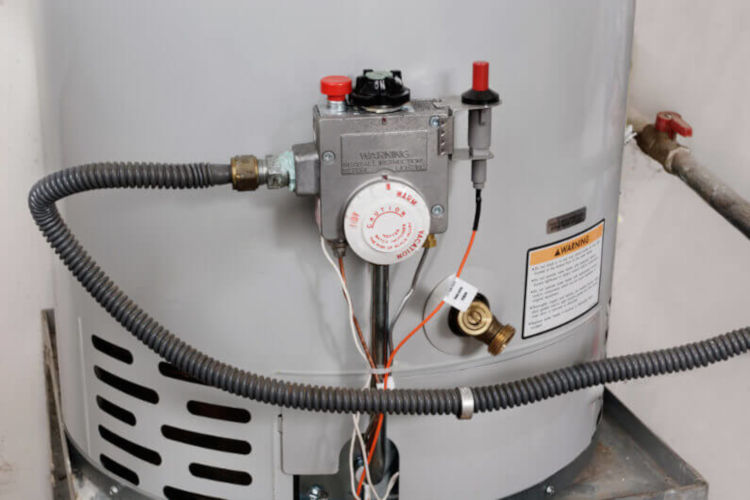Flushing Your Water Heater | Rochester MN
Your water heater is an appliance that’s often forgotten as it can function for years without fail, but regular maintenance keeps it functioning more efficiently and for longer, lowering your energy bill and staving off expensive repairs or replacement. Aside from having a professional come to look at your water heater annually to make sure that there are no other issues, flushing your water heater regularly is important to keep mineral and calcium buildup from compromising the integrity of the heater, causing leaks, clogs, or damaging the heating element.
Service Pros sees the effects of neglected water heaters all the time, repairing or replacing them when they could have run smoothly for years to come with a little maintenance. If you know your water heater hasn’t been flushed in years, it’s best to call a professional like Service Pros to do it as the amount of buildup can make the process more difficult.

How often should you flush your water heater?
Your water heater should be flushed twice a year in most cases or once a year at a minimum. If you wait longer than that, it will allow the buildup of sediments to harden, making it more difficult to flush your water heater the next time. If you have hard water (water that’s rich in minerals) you may want to flush it four times a year as the minerals will build up faster in the tank.
How do you flush your water heater?
1. Look at the water heater to find the manufacturer and model or locate the owner’s manual. You’ll also need a wet/shop vac and a hose (regular garden hoses work perfect). Gloves and goggles are recommended as hot water and sediment can be harmful to the eyes and skin. If you’re draining the water into a drain in your house, you’ll want a drain filter or colander so it doesn’t clog the drain.
2. Cut off power to the water heater if it’s electric (you can do this at your breaker box) and for gas heaters, consult your manual or the manufacturer to determine if they recommend shutting off the gas to the heater with the valve or just setting it on pilot. Turning off the heat to the water heater can be model dependent and instructions can be found in your manual, on the manufacturer’s website, or by contacting the manufacturer.
3. Let the water in the water heater cool for a few hours or run hot water from a faucet till it’s cool. This will prevent injury to you, your children, your pets, or your plants as the water drains. This is particularly important if there ends up being a clog in the drain valve.
4. Shut off the water supply to the water heater. Sometimes there is a valve to shut off the water on the water heater itself, or on a line between the heater and a water softener, otherwise cut off water to the house.
5. Find the drain valve at the bottom of the water heater and connect a hose, but leave the drain valve closed.
6. Place the other end of the hose at a drain covered with a filter or outside, away from the foundation of your home.
7. Turn on the hot water on a nearby faucet.
8. Open the drain valve on your hot water heater to let it drain. If no water comes out, the water heater is probably clogged, skip to step *17 before proceeding.
9. When the water is drained, turned the water supply to the water heater/house back on to rinse it until the water being drained is clear of sediment.
10. Turn the water supply to the water heater/house back off.
11. Disconnect the hose from the water heater once the remaining water is drained.
12. Use a wet vac to clear any remaining sediment from the drain valve.
13. Close the drain valve.
14. Turn the water supply to the water heater/house back on.
15. Run your faucets for a few minutes to clear any remaining sediment and air. Be sure to run water on all floors of the house.
16. Turn the heat to your water heater back on according to the manufacturer’s instruction and whether you have a gas or electric water heater (either at the breaker box or gas valve/thermostat). You’re done!
*17. If there is a clog, open the temperature pressure release valve and wait a few minutes.
*18. Disconnect the hose and use a wet vac to suck the blockage out of the drain valve until water is flowing again and reconnect the hose. If it won’t unclog, remove the drain valve and try the wet vac again, then replace the valve and the hose. Once it’s unclogged, close the pressure release valve and go back to step 9.
If all this sounds like too much trouble, or you don’t want to know what’s been lurking in your long neglected water heater, call Service Pros and we can come out to do regular maintenance on your water heater. We can also make sure everything else in your water heater is holding up and doesn’t need to be replaced. Replacing small, inexpensive parts like anode rods can help prevent the water tank from corroding, leaking, and needing to be replaced entirely. Other parts that have wear can be replaced with newer, more energy efficient components. Call Service Pros today to get a quote on maintenance for your water heater.

